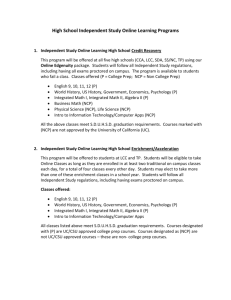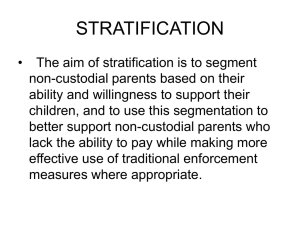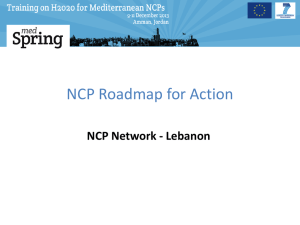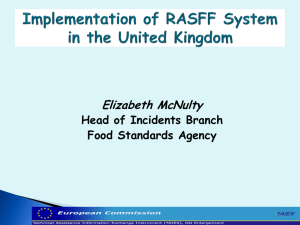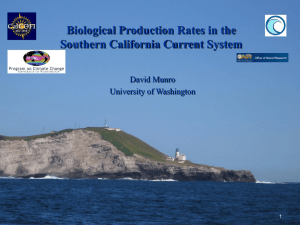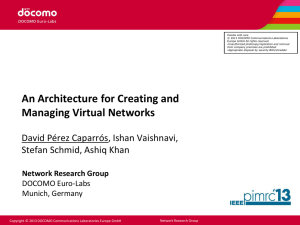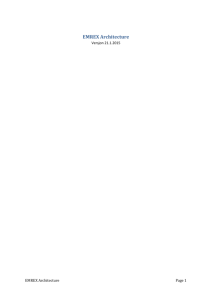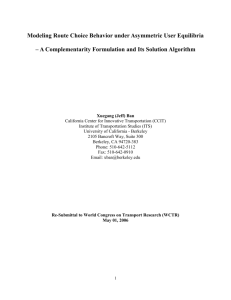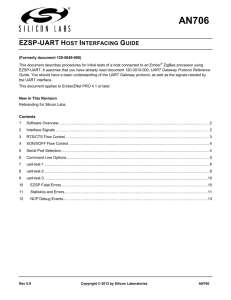Estimation of Large-scale Net Community Production Patterns
advertisement
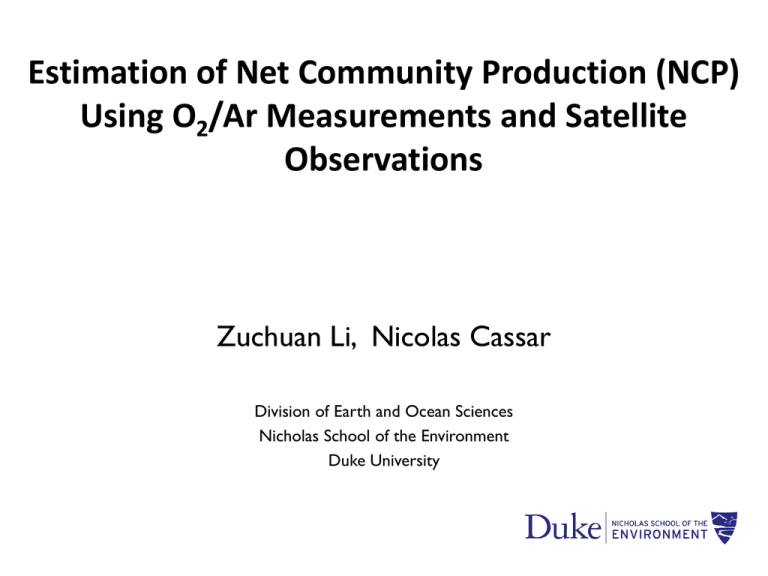
Estimation of Net Community Production (NCP) Using O2/Ar Measurements and Satellite Observations Zuchuan Li, Nicolas Cassar Division of Earth and Ocean Sciences Nicholas School of the Environment Duke University Overall objective • Develop an independent estimate of global Net Community Production (NCP) 1. A large independent training dataset : O2/Ar-derived NCP 2. Satellite observations 3. Statistical methods: Support Vector Regression Genetic Programming • Compare to current algorithms of export production Examples of current export production algorithms • Laws et al. (2000) ef-Ratio Export production ~ NPP * Export ratio • Dunne et al. (2005 & 2007) pe−ratio = −0.0081 ∗ 𝑆𝑆𝑇 + 0.0806 ∗ ln 𝐶ℎ𝑙 + 0.426 0.04 < pe-ratio < 0.72 O2/Ar-derived NCP Atmosphere NCP ~ Δ[O2]biosat*gas exchange coefficient Photosynthesis (GPP) CO2 NCP Organic matter + O2 Auto- & hetero- trophic respiration Base of the mixed layer 1. NCP • Gross Primary Production (GPP) – Community respiration • Net Primary Production (NPP) – Heterotrophic respiration 2. NCP estimation • O2/Ar measurements • Satellite observations (e.g. NPP and SST) 3. Uncertainties in O2/Ar measurements • See Reuer et al. 2007, Cassar et al. 2011, Jonsson et al. 2013 Total O2/Ar Observations N = 14795 (9km) Satellite match observations N = 3874 1. 2. SeaWiFS 1) NPP (from VGPM) 2) POC 3) Chl-a 4) phytoplankton size structure (Li et al. 2013) 5) Rrs(λ) 6) PAR Others 1) SST 2) Mixed-layer depth (Hosoda et al. 2010) Filter with Rossby Radius N = 722 NCP vs. satellite observations • Increases with productivity and biomass: – NPP – POC – Chl-a • Decreases trend with: – SST • Displays nonlinearity and scatter Statistical algorithms Genetic programming (Schmidt and Lipson 2009) Support vector regression (Vapnik 2000) • Theory: Search for the form of equations and their coefficients • Theory: Search for a nonlinear model within an error and as flat as possible • Input: NPP, Chl-a, POC, SST … • Input: NPP, Chl-a, POC, SST • Output: Equations • Output: Implicit model Model validation • Equation from genetic programming: 𝑁𝑃𝑃 12.6 + 1.5 ∗ 𝑆𝑆𝑇 Genetic Programming Support Vector Regression Predicted NCP Predicted NCP 𝑁𝐶𝑃 = Observed NCP NCP has units of (mmol O2 m-2 day-1) Observed NCP Comparison A. B. C. D. E. F. G. H. Eppley: Eppley and Peterson (1979) Betzer: Betzer et al. (1984) Baines: Baines et al. (1994) Laws: Laws et al. (2000) Dunne: Dunne et al. (2005 & 2007) Westberry: Westberry et al. (2012) This study (GP): genetic programming This study (SVR): support vector regression Differences between algorithms • Consistent regions: – North Atlantic – North Pacific – Region around 45o S • Regions with large discrepancy: – Oligotrophic gyres – Southern Ocean – Arctic Ocean • Possible reasons: – Limited observations – Different • • Field methods Measured properties – Uncertainties in satellite products ([Chla], NPP (VGPM), etc.) (CV: coefficient of variation) Comparison with Laws et al. 2000 • GP(this study)/Laws – Consistent in most regions – Our algorithm predicts higher NCP in: • Southern Ocean • Transitional regions GP(this study)/Laws Conclusions • Our method shows a relatively good agreement to other models – With a completely independent training dataset and scaling methods • However: – Our algorithms predict more uniform carbon fluxes in the world’s oceans – Discrepancies are observed in some regions, such as Southern Ocean where our algorithms generally predict higher NCP • Work in progress… – Develop region specific algorithms – Test consistency of the genetic programming solutions and transferability – Test with additional datasets Acknowledgements • All of our O2/Ar collaborators for providing the field observations Thank you! Dissolved O2/Ar-based NCP • O2/Ar measurement • [O2] contributed to biological process • NCP O2/Ar-based NCP measurement Atmosphere NCP = D[O2]sat*gas exchange coefficient NCP=Photosynthesis-Respiration NCP = Net (POC + DOC) change Base of the mixed layer Assumptions, Limitations, Uncertainties: – No mixing across base of mixed layer – Steady-state (see Hamme et al. 2012) – Restricted to the whole mixed layer – Gas exchange parameterized in terms of windspeed Argon: Inert gas which has similar solubility properties as oxygen Validation • Genetic programming – A: 𝑁𝐶𝑃 = 𝑁𝑃𝑃 12.6+1.5∗𝑆𝑆𝑇 – B: 𝑁𝐶𝑃 = 16.5 + 0.0198 ∗ 𝑁𝑃𝑃 − 0.617 ∗ 𝑆𝑆𝑇 – C: 𝑁𝐶𝑃 = 𝑁𝑃𝑃 0.117∗𝑃𝑂𝐶+1.61∗𝑆𝑆𝑇
